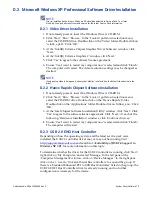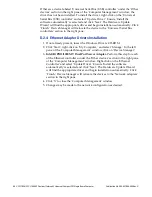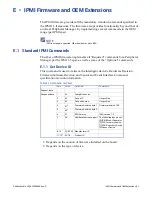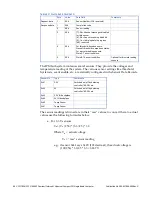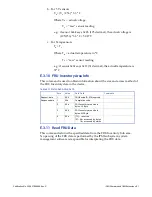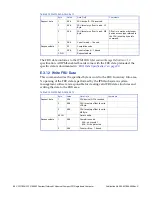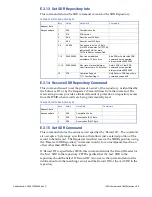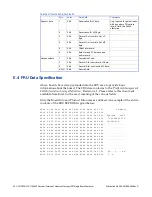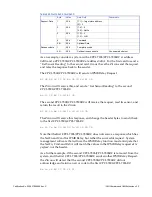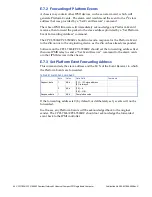
Publication No. 500-657806-000 Rev. G
IPMI Firmware and OEM Extensions 93
As an example, consider a system with a CPCI-7806/CPCI-7806RC at address
0xB0, and a CPCI-7806/CPCI-7806RC at address 0xBA. For the first card to send a
“Get Sensor Reading” to the second card, it must have the Zircon send the request
and relay the response back to the sender.
The CPCI-7806/CPCI-7806RC will send an IPMB Relay Request:
b0 c8 88 6e 00 00 ba 04 00 2d 61 46
The Zircon will receive this, and send a “Get Sensor Reading” to the second
CPCI-7806/CPCI-7806RC.
ba 10 36 b0 00 2d 61 04
The second CPCI-7806/CPCI-7806RC will receive the request, read its sensor, and
return the result to the Zircon:
b0 14 3c ba 00 2d 1e c0 c0 00 7b
The Zircon will receive this response, and change the header bytes to send it back
to the first CPCI-7806/CPCI-7806RC:
6e 14 7e ba 00 2d 00 1e c0 c0 00 7b
Note that the first CPCI-7806/CPCI-7806RC does not receive a response which has
the NetFn and Cmd for IPMB Relay, but rather the successful request. System
management software that will use the IPMB Relay function must anticipate that
the NetFn, Cmd, and RsSA will match the values in the IPMB Relay request
data
payload
, not the header.
As a further example, if the second CPCI-7806/CPCI-7806RC is removed from the
system, and the first CPCI-7806/CPCI-7806RC sends another IPMB Relay Request,
the Zircon will detect that the second CPCI-7806/CPCI-7806RC did not
acknowledge and return an error code to the first CPCI-7806/CPCI-7806RC:
6e cc c6 b0 00 00 ff 51
Table E-20 NetFn 0x32, Cmd 0x00
Byte
Value
Data Field
Comments
Request-Data
1
XXh
[7:1] – Target slave address
[0] – 0
2
XXh
[7:6] – 0
[5:0] – NetFn
3
XXh
[7:2] – 0
[1:0] – LUN
4
XXh
Command
5:N
XXh
Optional Data
Response-data
1
XXh
Completion code
2:N
XXh
Optional response data
See examples below

